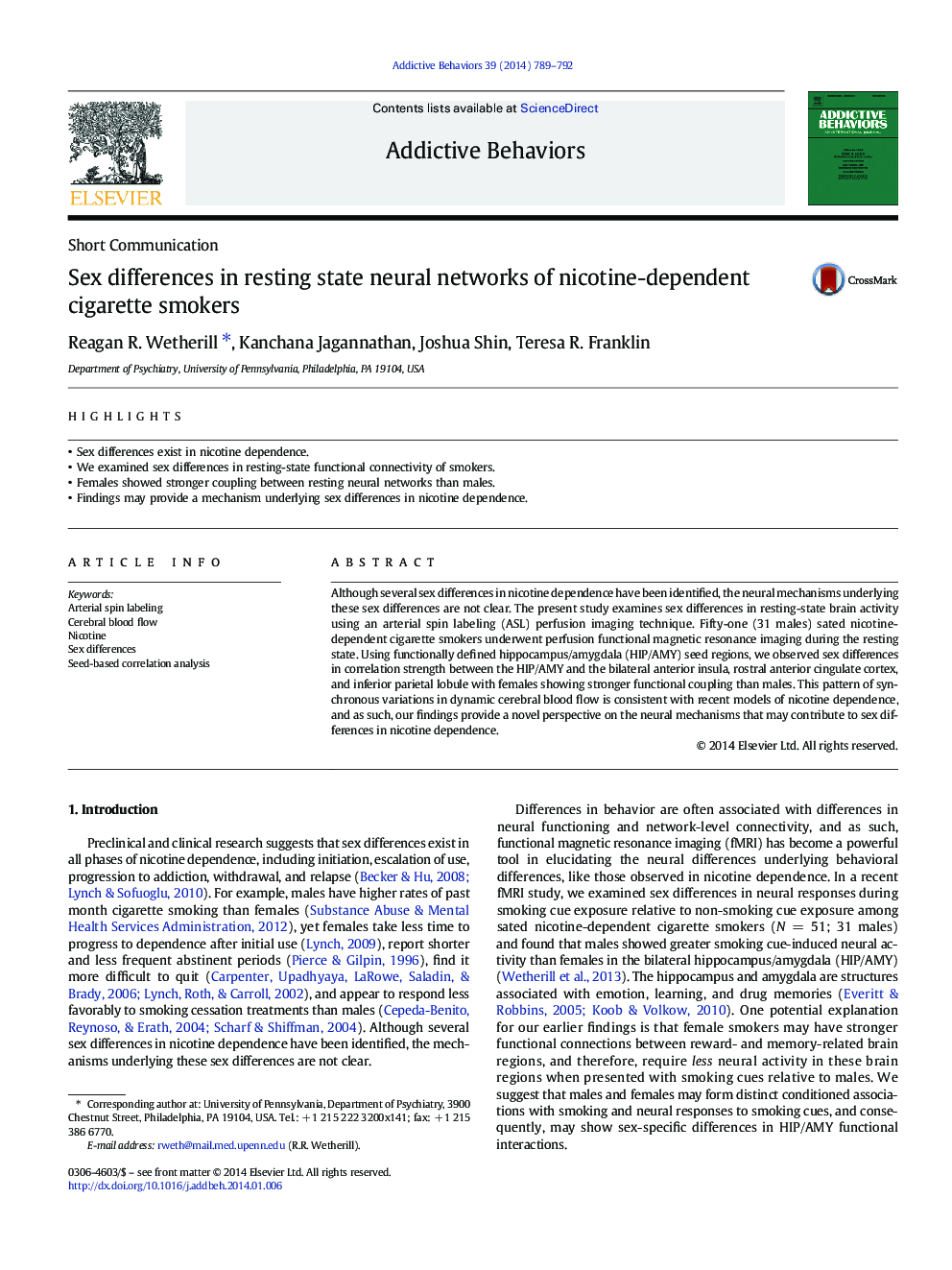| Article ID | Journal | Published Year | Pages | File Type |
|---|---|---|---|---|
| 899079 | Addictive Behaviors | 2014 | 4 Pages |
•Sex differences exist in nicotine dependence.•We examined sex differences in resting-state functional connectivity of smokers.•Females showed stronger coupling between resting neural networks than males.•Findings may provide a mechanism underlying sex differences in nicotine dependence.
Although several sex differences in nicotine dependence have been identified, the neural mechanisms underlying these sex differences are not clear. The present study examines sex differences in resting-state brain activity using an arterial spin labeling (ASL) perfusion imaging technique. Fifty-one (31 males) sated nicotine-dependent cigarette smokers underwent perfusion functional magnetic resonance imaging during the resting state. Using functionally defined hippocampus/amygdala (HIP/AMY) seed regions, we observed sex differences in correlation strength between the HIP/AMY and the bilateral anterior insula, rostral anterior cingulate cortex, and inferior parietal lobule with females showing stronger functional coupling than males. This pattern of synchronous variations in dynamic cerebral blood flow is consistent with recent models of nicotine dependence, and as such, our findings provide a novel perspective on the neural mechanisms that may contribute to sex differences in nicotine dependence.
